Critical Success Factors Evaluation for Blockchain’s Adoption and Implementing
Abstract
1. Introduction
- What are the CSFs of blockchain technology from a broad perspective and not for specific applications?
- What are the types of relationships among factors, and what is the significance of these relations?
- What measures can be used to quantify the success of a blockchain?
2. Related Work
3. Research Model
- Phase 1: “Search using search terms”.
- Phase 2: “Exclusion based on title and abstract”.
- Phase 3: “Exclusion based on introduction and conclusions”.
- Phase 4: “Exclusion based on the full text”.
- Phase 5: “Final selection of primary studies”.
3.1. Blockchain Success Factors
3.1.1. Technological Context
3.1.2. Organizational Context
3.1.3. Environmental Context
3.2. Blockchain Success Indicators
3.2.1. Overall Performance
3.2.2. System Robustness
3.2.3. Data Robustness
3.2.4. Accessibility
3.2.5. Overall Cost
4. The Relationships among the Factors
4.1. Hierarchical DEMATEL
- Generate the average direct-relation matrix “X”;
- Normalize the direct-relation matrix “N”;
- Obtain the total direct-relation matrix “T”;
- Compute prominence and relations between factors.
- Step H1. Hierarchical decomposition
- Step H2. Direct influence analysis
- Step H3. Construct the super initial direct-relation matrix
4.2. Quantifying the Relationship among the Factors
5. Results and Discussions
6. Conclusions
Author Contributions
Funding
Data Availability Statement
Conflicts of Interest
References
- Bogart, S.; Rice, K. The blockchain report: Welcome to the internet of value. Needham Insights 2015, 5, 1–10. [Google Scholar]
- Tapscott, D.; Tapscott, A. How blockchain will change organizations. MIT Sloan Manag. Rev. 2017, 58, 10–13. [Google Scholar] [CrossRef]
- Shoaib, M.; Lim, M.K.; Wang, C. An integrated framework to prioritize blockchain-based supply chain success factors. Ind. Manag. Data Syst. 2020, 120, 2103–2131. [Google Scholar] [CrossRef]
- Shardeo, V.; Patil, A.; Madaan, J. Critical Success Factors for Blockchain Technology Adoption in Freight Transportation Using Fuzzy ANP-Modified TISM Approach. Int. J. Inf. Technol. Decis. Mak. 2020, 19, 1549–1580. [Google Scholar] [CrossRef]
- Zaied, A.N.H.; Grida, M.O.; Hussein, G.S. Factors Influencing the Successful Implementation of BIS. Int. J. Eng. Trends Technol. 2018, 60, 102–108. [Google Scholar] [CrossRef]
- Gina, B.; Budree, A. A review of literature on critical factors that drive the selection of business intelligence tools. In Proceedings of the 2020 International Conference on Artificial Intelligence, Big Data, Computing and Data Communication Systems (icABCD), Durban, South Africa, 6–7 August 2020. [Google Scholar] [CrossRef]
- Alabaddi, Z.A.; Rahahleh, A.H.; Alali, H.; Muflih, M.A.; Al-Nsour, S.N. The relative importance of the critical success factors of business intelligence(BI) systems implementation in Jordanian pharmaceutical companies. J. Theor. Appl. Inf. Technol. 2020, 98, 2132–2147. [Google Scholar]
- Vargas, M.A.; Comuzzi, M. A multi-dimensional model of Enterprise Resource Planning critical success factors. Enterp. Inf. Syst. 2020, 14, 38–57. [Google Scholar] [CrossRef]
- Kouriati, A.; Moulogianni, C.; Kountios, G.; Bournaris, T.; Dimitriadou, E.; Papadavid, G. Evaluation of Critical Success Factors for Enterprise Resource Planning Implementation Using Quantitative Methods in Agricultural Processing Companies. Sustainability 2022, 14, 6606. [Google Scholar] [CrossRef]
- Mir, U.B.; Sharma, S.; Kar, A.K.; Gupta, M.P. Critical success factors for integrating artificial intelligence and robotics. Digit. Policy Regul. Gov. 2020, 22, 307–331. [Google Scholar] [CrossRef]
- Chen, H.; Li, L.; Chen, Y. Explore success factors that impact artificial intelligence adoption on telecom industry in China. J. Manag. Anal. 2021, 8, 36–68. [Google Scholar] [CrossRef]
- Post, R.; Smit, K.; Zoet, M. Identifying Factors Affecting Blockchain Technology Diffusion. In Proceedings of the 24th International Conference on Business Information Systems, New Orleans, LA, USA, 16–18 August 2018. [Google Scholar]
- Zhou, Y.; Shan, Y.; Shan, H.; Fai, K. The key challenges and critical success factors of blockchain implementation: Policy implications for Singapore’s maritime industry. Mar. Policy 2020, 122, 104265. [Google Scholar] [CrossRef]
- Juliet, I.; Kusi-sarpong, S.; Huang, S.; Vazquez-brust, D. Evaluating the factors that influence blockchain adoption in the freight logistics industry. Transp. Res. Part E Logist. Transp. Rev. 2020, 141, 102025. [Google Scholar]
- Prasad, S.; Shankar, R.; Gupta, R.; Roy, S. A TISM modeling of critical success factors of blockchain based cloud services. J. Adv. Manag. Res. 2018, 15, 434–456. [Google Scholar] [CrossRef]
- Hartmann, F.; Grottolo, G.; Wang, X.; Lunesu, M.I. Alternative Fundraising: Success Factors for Blockchain-Based vs. Conventional Crowdfunding. In Proceedings of the 2019 IEEE International Workshop on Blockchain Oriented Software Engineering (IWBOSE), Hangzhou, China, 24 February 2019; pp. 38–43. [Google Scholar] [CrossRef]
- Parmentola, A.; Petrillo, A.; Tutore, I.; De Felice, F. Is blockchain able to enhance environmental sustainability? A systematic review and research agenda from the perspective of Sustainable Development Goals (SDGs). Bus. Strat. Environ. 2022, 31, 194–217. [Google Scholar] [CrossRef]
- Kouhizadeh, M.; Saberi, S.; Sarkis, J. Blockchain technology and the sustainable supply chain: Theoretically exploring adoption barriers. Int. J. Prod. Econ. 2021, 231, 107831. [Google Scholar] [CrossRef]
- Yadav, S.; Singh, S.P. Blockchain critical success factors for sustainable supply chain. Resour. Conserv. Recycl. 2020, 152, 104505. [Google Scholar] [CrossRef]
- Kayikci, Y.; Gozacan-Chase, N.; Rejeb, A.; Mathiyazhagan, K. Critical success factors for implementing blockchain-based circular supply chain. Bus. Strat. Environ. 2022, 31, 3595–3615. [Google Scholar] [CrossRef]
- Elhidaoui, S.; Benhida, K.; El Fezazi, S.; Kota, S.; Lamalem, A. Critical Success Factors of Blockchain adoption inGreen Supply Chain Management: Contribution through an Interpretive Structural Model. Prod. Manuf. Res. 2022, 10, 1–23. [Google Scholar] [CrossRef]
- Biswas, B.; Gupta, R. Analysis of barriers to implement blockchain in industry and service sectors. Comput. Ind. Eng. 2019, 136, 225–241. [Google Scholar] [CrossRef]
- Du, Y.W.; Li, X.X. Hierarchical DEMATEL method for complex systems. Expert Syst. Appl. 2021, 167, 113871. [Google Scholar] [CrossRef]
- Khan, S.U.; Niazi, M.; Ahmad, R. Factors influencing clients in the selection of offshore software outsourcing vendors: An exploratory study using a systematic literature review. J. Syst. Softw. 2011, 84, 686–699. [Google Scholar] [CrossRef]
- Butijn, B.J.; Tamburri, D.A.; Van Den Heuvel, W.J. Blockchains: A systematic multivocal literature review. arXiv 2019, arXiv:1911.11770. [Google Scholar] [CrossRef]
- Kitchenham, B.; Pearl Brereton, O.; Budgen, D.; Turner, M.; Bailey, J.; Linkman, S. Systematic literature reviews in software engineering—A systematic literature review. Inf. Softw. Technol. 2009, 51, 7–15. [Google Scholar] [CrossRef]
- Akbar, M.A.; Sang, J.; Khan, A.A.; Hussain, S. Investigation of the requirements change management challenges in the domain of global software development. J. Softw. Evol. Process. 2019, 31, e2207. [Google Scholar] [CrossRef]
- Golosova, J.; Romanovs, A. The advantages and disadvantages of the blockchain technology. In Proceedings of the 2018 IEEE 6th Workshop on Advances in Information, Electronic and Electrical Engineering (AIEEE), Vilnius, Lithuania, 8–10 November 2018. [Google Scholar] [CrossRef]
- Afzal, W.; Torkar, R.; Feldt, R. A systematic review of search-based testing for non-functional system properties. Inf. Softw. Technol. 2009, 51, 957–976. [Google Scholar] [CrossRef]
- Morkunas, V.J.; Paschen, J.; Boon, E. How blockchain technologies impact your business model. Bus. Horiz. 2019, 62, 295–306. [Google Scholar] [CrossRef]
- Garg, P.; Gupta, B.; Chauhan, A.K.; Sivarajah, U.; Gupta, S.; Modgil, S. Measuring the perceived benefits of implementing blockchain technology in the banking sector. Technol. Forecast. Soc. Chang. 2021, 163, 120407. [Google Scholar] [CrossRef]
- Upadhyay, N. Demystifying blockchain: A critical analysis of challenges, applications and opportunities. Int. J. Inf. Manag. 2020, 54, 102120. [Google Scholar] [CrossRef]
- Hughes, L.; Dwivedi, Y.K.; Misra, S.K.; Rana, N.P.; Raghavan, V.; Akella, V. Blockchain Research, Practice and Policy: Applications, Benefits, Limitations, Emerging Research Themes and Research Agenda. Int. J. Inf. Manag. 2019, 49, 114–129. [Google Scholar] [CrossRef]
- Kshetri, N. 1 Blockchain’s roles in meeting key supply chain management objectives. Int. J. Inf. Manag. 2018, 39, 80–89. [Google Scholar] [CrossRef]
- Queiroz, M.M.; Fosso Wamba, S. Blockchain adoption challenges in supply chain: An empirical investigation of the main drivers in India and the USA. Int. J. Inf. Manag. 2019, 46, 70–82. [Google Scholar] [CrossRef]
- Schuetz, S.; Venkatesh, V. Blockchain, adoption, and financial inclusion in India: Research opportunities. Int. J. Inf. Manag. 2020, 52, 101936. [Google Scholar] [CrossRef]
- Saberi, S.; Kouhizadeh, M.; Sarkis, J.; Shen, L. Blockchain technology and its relationships to sustainable supply chain management. Int. J. Prod. Res. 2019, 57, 2117–2135. [Google Scholar] [CrossRef]
- Chang, V.; Baudier, P.; Zhang, H.; Xu, Q.; Zhang, J.; Arami, M. How Blockchain can impact financial services—The overview, challenges and recommendations from expert interviewees. Technol. Forecast. Soc. Chang. 2020, 158, 120166. [Google Scholar] [CrossRef]
- Brilliantova, V.; Thurner, T.W. Blockchain and the future of energy. Technol. Soc. 2019, 57, 38–45. [Google Scholar] [CrossRef]
- Zhao, G.; Liu, S.; Lopez, C.; Lu, H.; Elgueta, S.; Chen, H.; Boshkoska, B.M. Blockchain technology in agri-food value chain management: A synthesis of applications, challenges and future research directions. Comput. Ind. 2019, 109, 83–99. [Google Scholar] [CrossRef]
- Guo, Y.; Liang, C. Blockchain application and outlook in the banking industry. Financ. Innov. 2016, 2, 24. [Google Scholar] [CrossRef]
- Wang, H.; Chen, K.; Xu, D. A maturity model for blockchain adoption. Financ. Innov. 2016, 2, 12. [Google Scholar] [CrossRef]
- Chang, S.E.; Chen, Y.C.; Lu, M.F. Supply chain re-engineering using blockchain technology: A case of smart contract based tracking process. Technol. Forecast. Soc. Chang. 2019, 144, 1–11. [Google Scholar] [CrossRef]
- Makhdoom, I.; Abolhasan, M.; Abbas, H.; Ni, W. Blockchain’s adoption in IoT: The challenges, and a way forward. J. Netw. Comput. Appl. 2019, 125, 251–279. [Google Scholar] [CrossRef]
- Min, H. Blockchain technology for enhancing supply chain resilience. Bus. Horiz. 2019, 62, 35–45. [Google Scholar] [CrossRef]
- Montecchi, M.; Plangger, K.; Etter, M. It’s real, trust me! Establishing supply chain provenance using blockchain. Bus. Horiz. 2019, 62, 283–293. [Google Scholar] [CrossRef]
- Wang, Y.; Singgih, M.; Wang, J.; Rit, M. Making sense of blockchain technology: How will it transform supply chains? Int. J. Prod. Econ. 2019, 211, 221–236. [Google Scholar] [CrossRef]
- Angraal, S.; Krumholz, H.M.; Schulz, W.L. Blockchain technology: Applications in health care. Circ. Cardiovasc. Qual. Outcomes 2017, 10, e003800. [Google Scholar] [CrossRef] [PubMed]
- Marsal-Llacuna, M.L. Future living framework: Is blockchain the next enabling network? Technol. Forecast. Soc. Chang. 2018, 128, 226–234. [Google Scholar] [CrossRef]
- Angelis, J.; da Silva, E.R. Blockchain adoption: A value driver perspective. Bus. Horiz. 2019, 62, 307–314. [Google Scholar] [CrossRef]
- Kamble, S.; Gunasekaran, A.; Arha, H. Understanding the Blockchain technology adoption in supply chains-Indian context. Int. J. Prod. Res. 2019, 57, 2009–2033. [Google Scholar] [CrossRef]
- Gopalan, A.; Sankararaman, A.; Walid, A.; Vishwanath, S. Stability and Scalability of Blockchain Systems. Proc. ACM Meas. Anal. Comput. Syst. 2020, 4, 1–35. [Google Scholar] [CrossRef]
- Ølnes, S.; Jansen, A. Blockchain technology as s support infrastructure in e-Government. In Proceedings of the International Conference on Electronic Government, St. Petersburg, Russia, 4–7 September 2017; pp. 215–227. [Google Scholar] [CrossRef]
- Nilashi, M.; Ahmadi, H.; Ahani, A.; Ravangard, R.; bin Ibrahim, O. Determining the importance of Hospital Information System adoption factors using Fuzzy Analytic Network Process (ANP). Technol. Forecast. Soc. Chang. 2016, 111, 244–264. [Google Scholar] [CrossRef]
- Rahman, S.; Ahsan, K.; Yang, L.; Odgers, J. An Investigation into critical challenges for multinational third-party logistics providers operating in China. J. Bus. Res. 2019, 103, 607–619. [Google Scholar] [CrossRef]
- Ma, Z.; Zhao, W.; Luo, S.; Wang, L. TrustedBaaS: Blockchain-Enabled Distributed and Higher-Level Trusted Platform. Comput. Netw. 2020, 183, 107600. [Google Scholar] [CrossRef]
- Franks, P.C. Implications of blockchain distributed ledger technology for records management and information governance programs. Rec. Manag. J. 2020, 30, 287–299. [Google Scholar] [CrossRef]
- Dubey, R.; Gunasekaran, A.; Childe, S.J.; Roubaud, D.; Fosso Wamba, S.; Giannakis, M.; Foropon, C. Big data analytics and organizational culture as complements to swift trust and collaborative performance in the humanitarian supply chain. Int. J. Prod. Econ. 2019, 210, 120–136. [Google Scholar] [CrossRef]
- Dai, J.; Chan, H.K.; Yee, R.W.Y. Examining moderating effect of organizational culture on the relationship between market pressure and corporate environmental strategy. Ind. Mark. Manag. 2018, 74, 227–236. [Google Scholar] [CrossRef]
- Fernando, E.; Meyliana; Surjandy. Success factor of implementation blockchain technology in pharmaceutical industry: A literature review. In Proceedings of the 2019 6th International Conference on Information Technology, Computer and Electrical Engineering (ICITACEE), Semarang, Indonesia, 26–27 September 2019. [Google Scholar] [CrossRef]
- Andoni, M.; Robu, V.; Flynn, D.; Abram, S.; Geach, D.; Jenkins, D.; McCallum, P.; Peacock, A. Blockchain technology in the energy sector: A systematic review of challenges and opportunities. Renew. Sustain. Energy Rev. 2019, 100, 143–174. [Google Scholar] [CrossRef]
- Sharma, P.K.; Park, J.H. Blockchain based hybrid network architecture for the smart city. Futur. Gener. Comput. Syst. 2018, 86, 650–655. [Google Scholar] [CrossRef]
- Chen, S.; Zhao, C.; Huang, L.; Yuan, J.; Liu, M. Study and implementation on the application of blockchain in electronic evidence generation. Forensic Sci. Int. Digit. Investig. 2020, 35, 301001. [Google Scholar] [CrossRef]
- Ko, T.; Lee, J.; Ryu, D. Blockchain technology and manufacturing industry: Real-time transparency and cost savings. Sustainability 2018, 10, 4274. [Google Scholar] [CrossRef]
- Zhang, S.; Wang, L.; Xiong, H. Chaintegrity: Blockchain-enabled large-scale e-voting system with robustness and universal verifiability. Int. J. Inf. Secur. 2020, 19, 323–341. [Google Scholar] [CrossRef]
- Niranjanamurthy, M.; Nithya, B.N.; Jagannatha, S. Analysis of Blockchain technology: Pros, cons and SWOT. Clust. Comput. 2019, 22, 14743–14757. [Google Scholar] [CrossRef]
- Azaria, A.; Ekblaw, A.; Vieira, T.; Lippman, A. MedRec: Using blockchain for medical data access and permission management. In Proceedings of the 2016 2nd International Conference on Open and Big Data (OBD), Vienna, Austria, 22–24 August 2016; pp. 25–30. [Google Scholar] [CrossRef]
- Mitani, T.; Otsuka, A. Traceability in Permissioned Blockchain. IEEE Access 2020, 8, 21573–21588. [Google Scholar] [CrossRef]
- Behnke, K.; Janssen, M.F.W.H.A. Boundary conditions for traceability in food supply chains using blockchain technology. Int. J. Inf. Manag. 2020, 52, 101969. [Google Scholar] [CrossRef]
- Monev, V. Defining and Applying Information Security Goals for Blockchain Technology. In Proceedings of the 2020 International Conference on Information Technologies (InfoTech), Varna, Bulgaria, 17–18 September 2020. [Google Scholar] [CrossRef]
- Chung, H.; Chang, K. A Novel General Data Envelopment Analysis Based Approach for MCDM Issues of Hydrogen Energy under a Fuzzy Environment. Systems 2022, 10, 176. [Google Scholar] [CrossRef]
- Lu, M.T.; Lin, S.W.; Tzeng, G.H. Improving RFID adoption in Taiwan’s healthcare industry based on a DEMATEL technique with a hybrid MCDM model. Decis. Support Syst. 2013, 56, 259–269. [Google Scholar] [CrossRef]
- Wu, C.H.; Tsai, S.B. Using DEMATEL-based ANP model to measure the successful factors of E-commerce. J. Glob. Inf. Manag. 2018, 26, 120–135. [Google Scholar] [CrossRef]
- Lee, H.S.; Tzeng, G.H.; Yeih, W.; Wang, Y.J.; Yang, S.C. Revised DEMATEL: Resolving the infeasibility of DEMATEL. Appl. Math. Model. 2013, 37, 6746–6757. [Google Scholar] [CrossRef]
- Bai, C.; Sarkis, J. A grey-based DEMATEL model for evaluating business process management critical success factors. Int. J. Prod. Econ. 2013, 146, 281–292. [Google Scholar] [CrossRef]
- Li, C.W.; Tzeng, G.H. Identification of a threshold value for the DEMATEL method using the maximum mean de-entropy algorithm to find critical services provided by a semiconductor intellectual property mall. Expert Syst. Appl. 2009, 36, 9891–9898. [Google Scholar] [CrossRef]
- Xia, X.; Govindan, K.; Zhu, Q. Analyzing internal barriers for automotive parts remanufacturers in China using grey-DEMATEL approach. J. Clean. Prod. 2015, 87, 811–825. [Google Scholar] [CrossRef]
- Gabus, A.; Fontela, E. World Problems an Invitation to Further thought within the Framework of DEMATEL; Battelle Geneva Research Center: Geneva, Switzerland, 1972; Volume 1. [Google Scholar]
- Tseng, M.L. A causal and effect decision making model of service quality expectation using grey-fuzzy DEMATEL approach. Expert Syst. Appl. 2009, 36, 7738–7748. [Google Scholar] [CrossRef]
- Dietza, T.; Klamrothb, K.; Krausb, K.; Ruzikaa, S.; Schäfera, L.E.; Schulzeb, B.; Stiglmayrb, M.; Wiecekc, M.M. Introducing multiobjective complex systems. Eur. J. Oper. Res. 2020, 280, 581–596. [Google Scholar] [CrossRef]
- Han, X.; Tang, T.; Lv, J. A hierarchical verification approach to verify complex safety control systems based on STAMP. Sci. Comput. Program. 2019, 172, 117–134. [Google Scholar] [CrossRef]
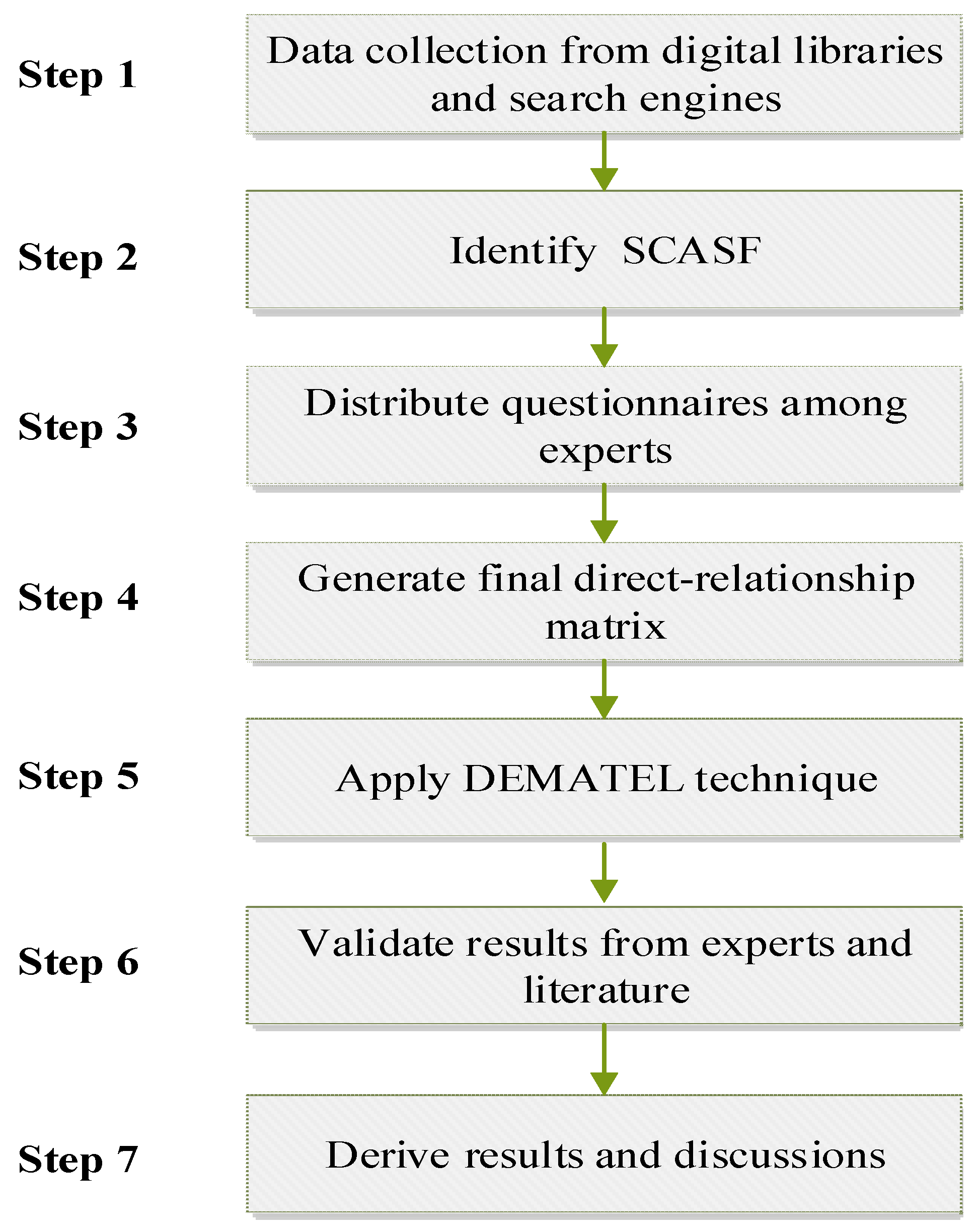
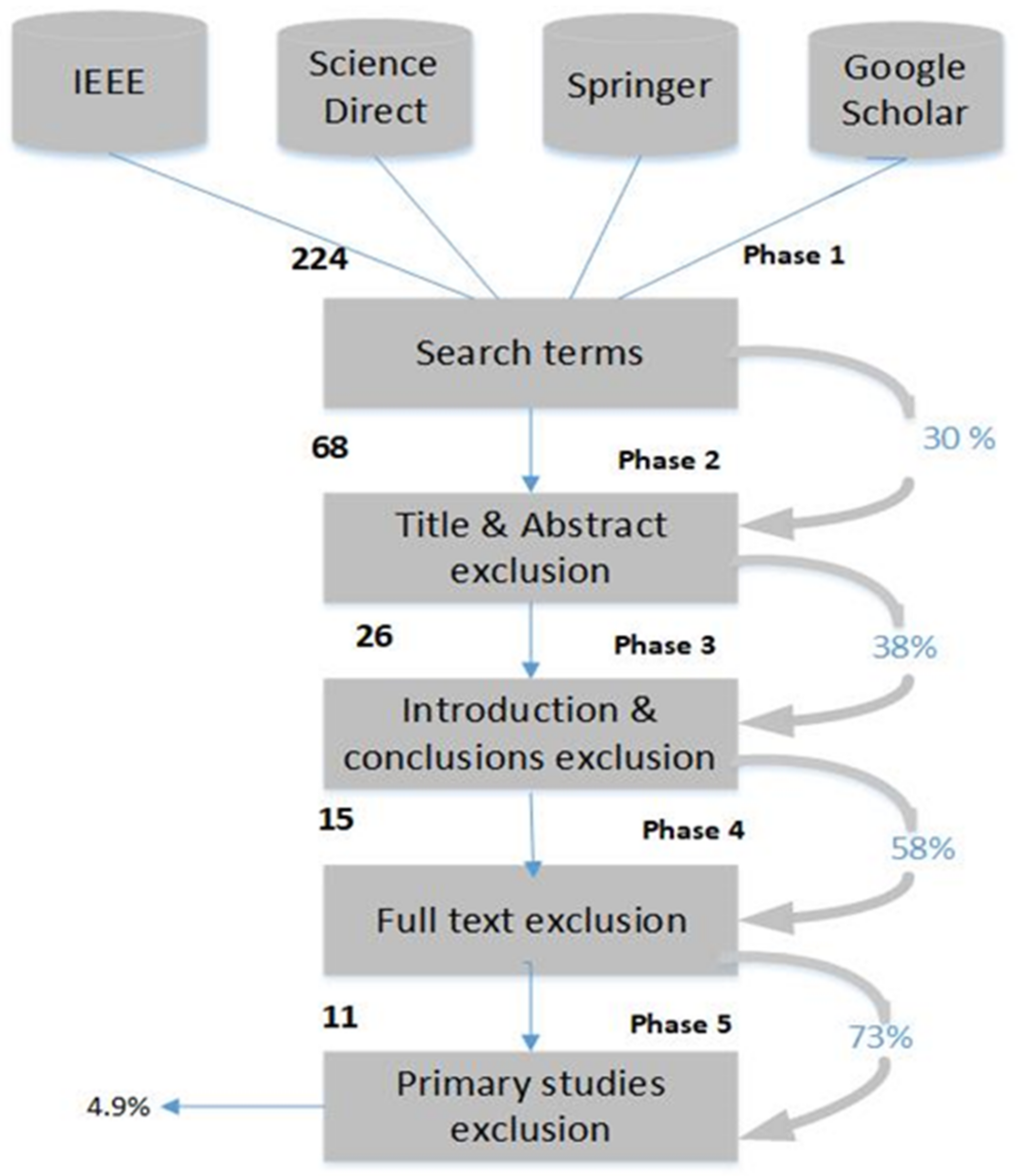
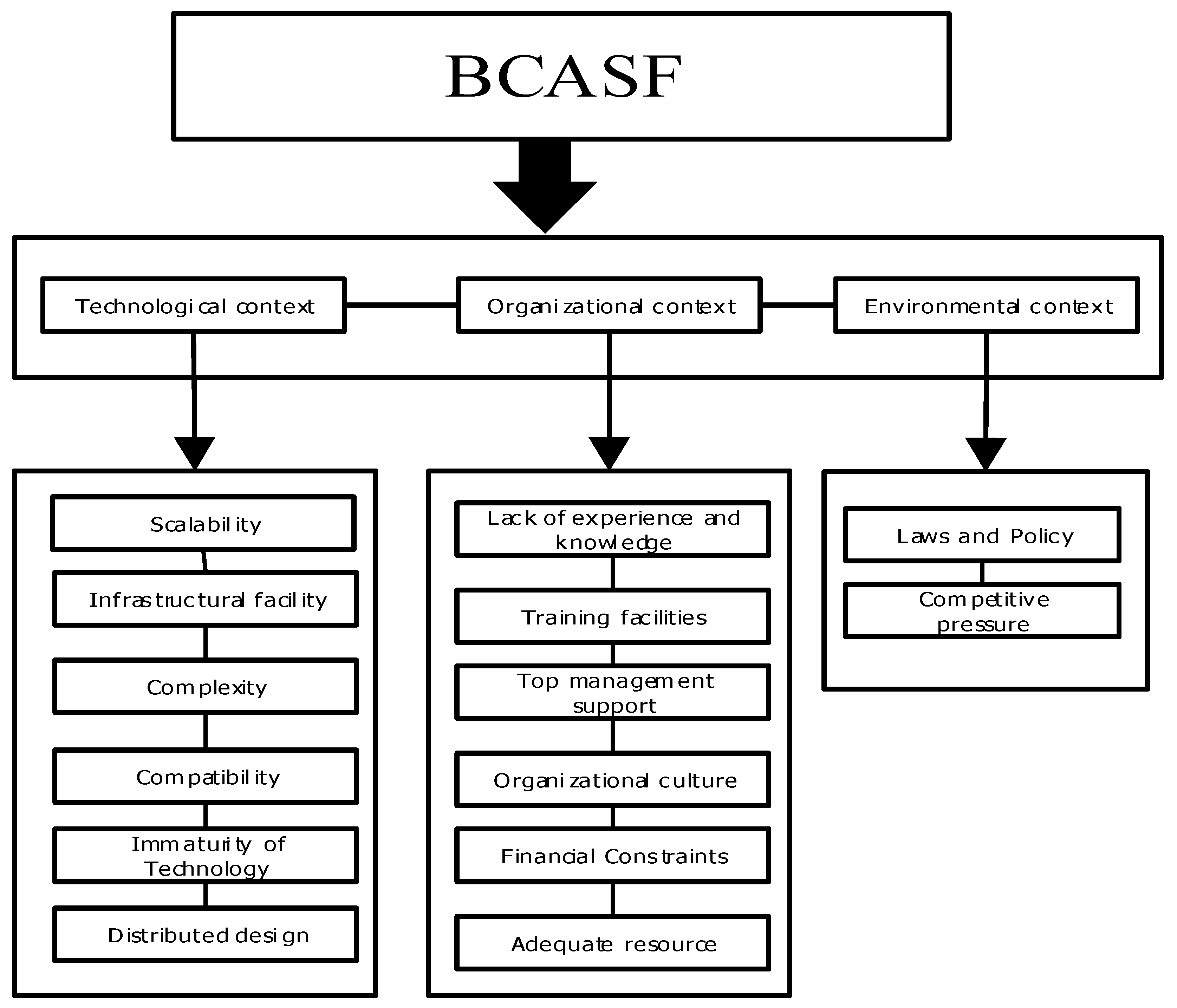
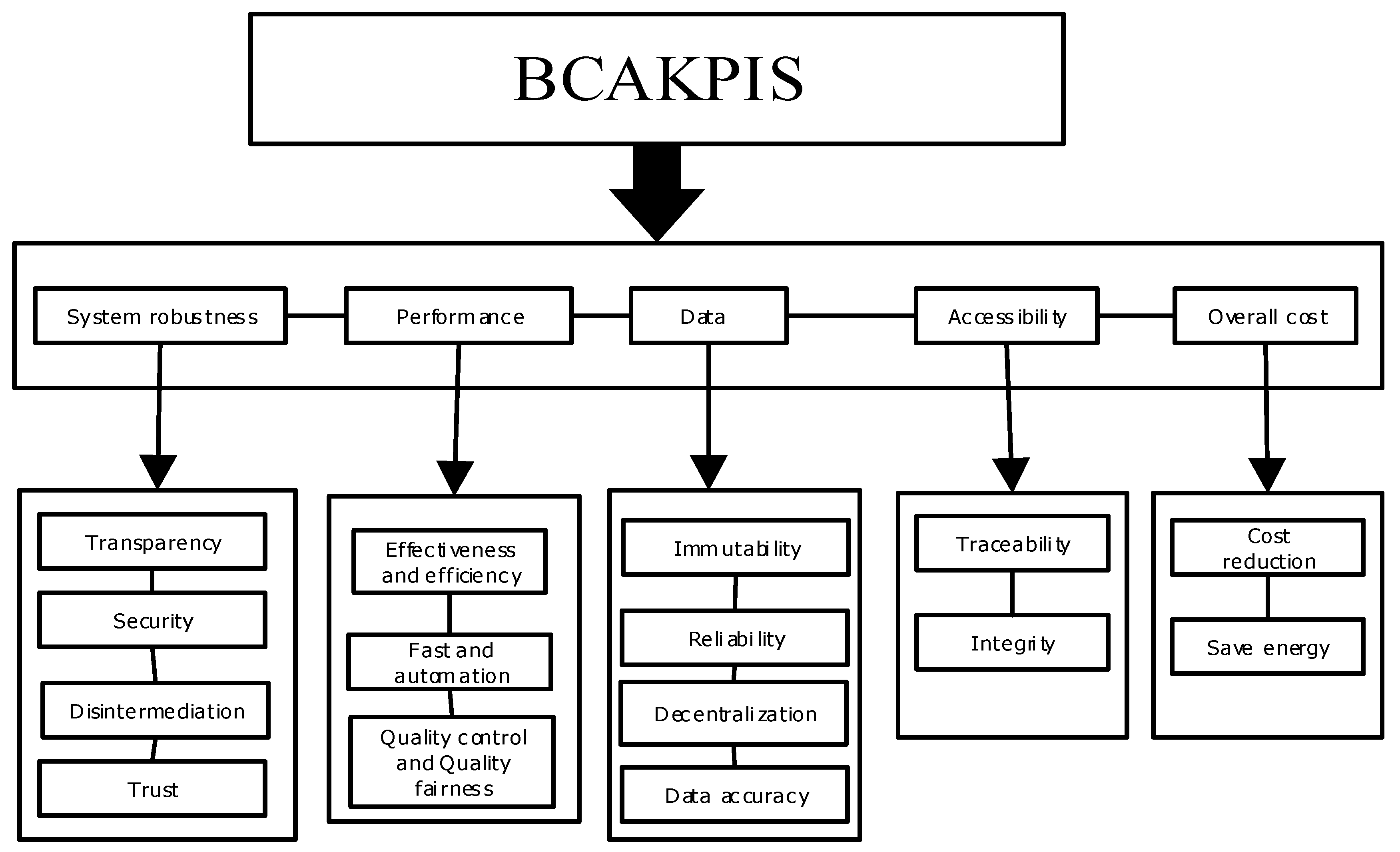
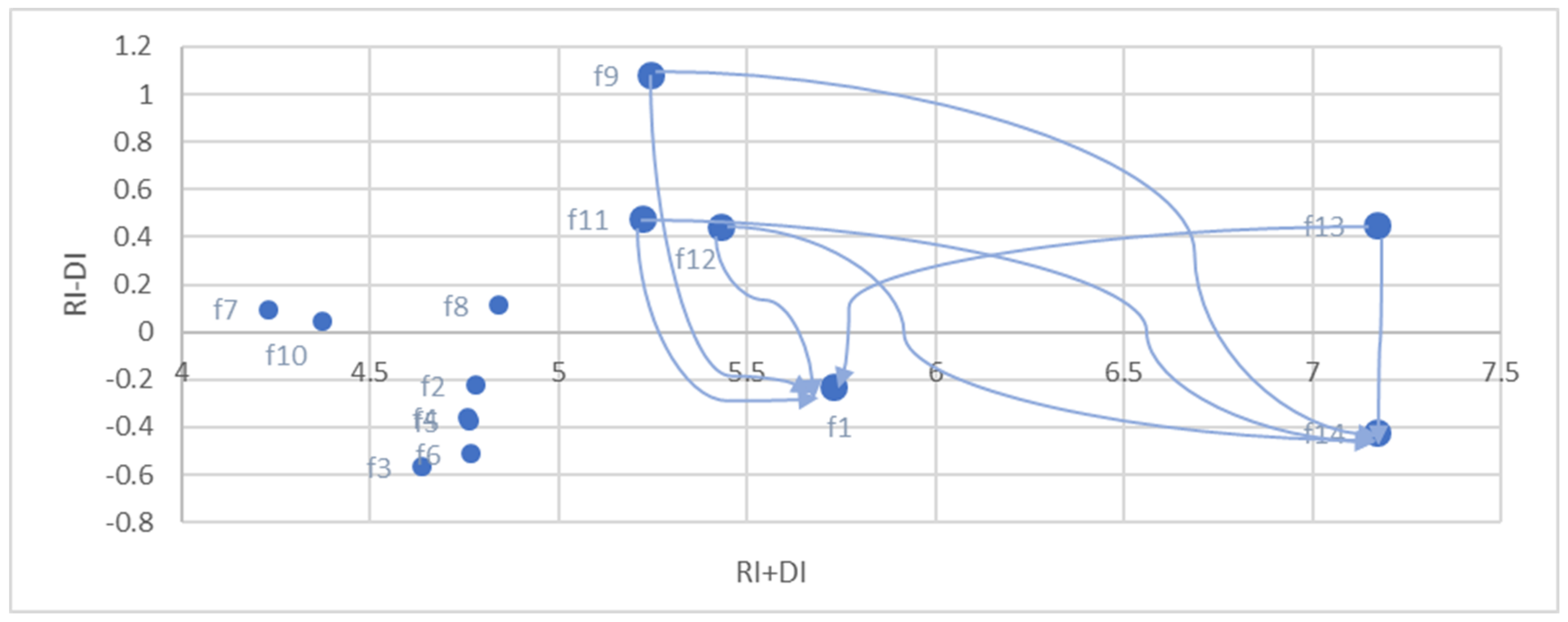
| Author | Research Area | Tools Used | Critical Factors Identified | Successful Implementation |
|---|---|---|---|---|
| Post et al. [12] | Blockchain | Grounded theory-based data collection and analysis | Strategic (sector pressure, organizational size) Tactical (knowledge deficit, implementation method) Operational (technical shortcomings, process maturity) | x |
| Zhou et al. [13] | Maritime industry | AHP, a fishbone diagram and PESTEL analysis | Lack of experience, lack of blockchain knowledge, and scalability | x |
| Juliet et al. [14] | Freight-logistics industry | ANP | Technological (infrastructural facility, complexity, compatibility) Organizational (training facilities, top management support) External environmental context (law and policy, competitive pressure) | x |
| Prasad et al. [15] | Cloud services | Total interpretive structural modeling (TISM) | Regulatory clarity, and law of experiences | x |
| Shardeo et al. [3] | Supply chain | AHP | x | System strength (transparency, disintermediation, immutability) Overall efficiency (effectiveness and efficiency, automation) Reliability and ecoreconciliation (reliability, immutability, decentralization) overall cost |
| Kouhizadeh et al. [18] | Supply chains | DEMATEL | Technological (infrastructural facility, immaturity) Organizational (financial constraints, top management support) Environmental (lack of governmental policies) | x |
| Inclusion Criteria | Exclusion Criteria |
|---|---|
| Published from 2018 to 2022 | Published not in the English language |
| In the field of block chain | Not relevant to challenges or success factors |
| Presented empirical data | Review papers or non-technical papers |
| Peer-reviewed | Grey literature (white papers, editorial comments, book reviews) |
| Categories | Factors |
|---|---|
| Technology | Scalability [13,30,31] |
| Infrastructural facility [14,18,22,32,33,34,35,36] | |
| Complexity [14,32,33] | |
| Compatibility [14,32,33,34,35] | |
| Immaturity of Technology [18,22,37] | |
| Distributed design [22] | |
| Organization | Lack of experience and knowledge [13,15,32,38,39] |
| Training facilities [13,27,30,31,32,36,37,38,39,40,41] | |
| Top management support [14,18,30,33,34,35,37,39,40,41,42,43,44,45,46] | |
| Organizational culture [13,14,18,30,33,34,37,39,40,43,44,45,46] | |
| Financial Constraints [18,22,33,37,47,48,49] | |
| Adequate resource [37] | |
| Environment | Laws and Policy [14,19,22,30,31,32,33,35,36,39,45,46,47,50,51] |
| Competitive pressure [14,30,35,36,39,45,46,50] |
| Measures | Factors |
|---|---|
| Overall performance | Efficiency [19,38,60] |
| Effectiveness [19,38,60] | |
| Speed [3,22,31,61,62] | |
| Quality [3,16] | |
| System robustness | Transparency [3,4,19,31,38,60,61,62] |
| Security [3,4,19,31,38,60,61,62] | |
| Disintermediation [3,19] | |
| Trust [4,19,60] | |
| Data | Immutability [3,19,31,60,63] |
| Reliability [3,4,60] | |
| Decentralization [3,19] | |
| Data accuracy [31] | |
| Accessibility | Traceability [3,4,19,37,38,60,63,64] |
| Integrity [3] | |
| Overall cost | Cost reduction [3,4,19,31,32,60] |
| Save energy [3] |
| Dimension | Factor | Criteria |
|---|---|---|
| Technological (F1⊃1) | f1 f2 f3 f4 f5 f6 | Scalability Infrastructural facility Complexity Compatibility Immaturity of technology Distributed design |
| Organizational (F1⊃2) | f7 f8 f9 f10 f11 f12 | Lack of experience and knowledge Training facilities Top management support Organizational culture Financial constraints Adequate resource |
| Environmental (F1⊃3) | f13 f14 | Laws and policy Competitive pressure |
| Subsystem | Factor | ri | di | |||||||
|---|---|---|---|---|---|---|---|---|---|---|
| F1⊃2 | 0.215 | 0.299 | 0.270 | 0.366 | 0.326 | 0.339 | 1.817 | 2.300 | 4.118 | |
| 0.382 | 0.276 | 0.251 | 0.395 | 0.355 | 0.411 | 2.072 | 2.612 | 4.684 | ||
| 0.521 | 0.615 | 0.306 | 0.580 | 0.584 | 0.611 | 3.218 | 1.828 | 5.047 | ||
| 0.314 | 0.344 | 0.269 | 0.231 | 0.327 | 0.342 | 1.829 | 2.428 | 4.257 | ||
| 0.448 | 0.531 | 0.343 | 0.422 | 0.331 | 0.528 | 2.605 | 2.441 | 5.047 | ||
| 0.418 | 0.545 | 0.388 | 0.432 | 0.516 | 0.366 | 2.666 | 2.598 | 5.264 | ||
| F1⊃3 | 2 | 3 | — | — | — | — | 5 | 4 | 9 | |
| 2 | 2 | — | — | — | — | 4 | 5 | 9 |
| Factor | Ranking | ||||
|---|---|---|---|---|---|
| Technological | f1 | Scalability | −0.23 | 5.73 | 3 |
| f2 | Infrastructural facility | −0.22 | 4.78 | 8 | |
| f3 | Complexity | −0.57 | 4.64 | 12 | |
| f4 | Compatibility | −0.36 | 4.76 | 11 | |
| f5 | Immaturity of technology | −0.37 | 4.76 | 10 | |
| f6 | Distributed design | −0.51 | 4.77 | 9 | |
| Organizational | f7 | Lack of experience and knowledge | 0.10 | 4.23 | 14 |
| f8 | Training facilities | 0.11 | 4.84 | 7 | |
| f9 | Top management support | 1.08 | 5.25 | 5 | |
| f10 | Organizational culture | 0.05 | 4.38 | 13 | |
| f11 | Financial constraints | 0.48 | 5.22 | 6 | |
| f12 | Adequate resource | 0.44 | 5.43 | 4 | |
| Enviomental | f13 | Laws and policy | 0.45 | 7.17 | 1 |
| f14 | Competitive pressure | −0.43 | 7.17 | 2 |
Disclaimer/Publisher’s Note: The statements, opinions and data contained in all publications are solely those of the individual author(s) and contributor(s) and not of MDPI and/or the editor(s). MDPI and/or the editor(s) disclaim responsibility for any injury to people or property resulting from any ideas, methods, instructions or products referred to in the content. |
© 2022 by the authors. Licensee MDPI, Basel, Switzerland. This article is an open access article distributed under the terms and conditions of the Creative Commons Attribution (CC BY) license (https://creativecommons.org/licenses/by/4.0/).
Share and Cite
Grida, M.O.; Abd Elrahman, S.; Eldrandaly, K.A. Critical Success Factors Evaluation for Blockchain’s Adoption and Implementing. Systems 2023, 11, 2. https://doi.org/10.3390/systems11010002
Grida MO, Abd Elrahman S, Eldrandaly KA. Critical Success Factors Evaluation for Blockchain’s Adoption and Implementing. Systems. 2023; 11(1):2. https://doi.org/10.3390/systems11010002
Chicago/Turabian StyleGrida, Mohamed O., Samah Abd Elrahman, and Khalid A. Eldrandaly. 2023. "Critical Success Factors Evaluation for Blockchain’s Adoption and Implementing" Systems 11, no. 1: 2. https://doi.org/10.3390/systems11010002
APA StyleGrida, M. O., Abd Elrahman, S., & Eldrandaly, K. A. (2023). Critical Success Factors Evaluation for Blockchain’s Adoption and Implementing. Systems, 11(1), 2. https://doi.org/10.3390/systems11010002







